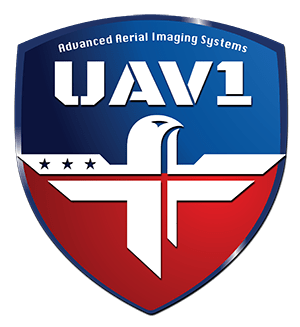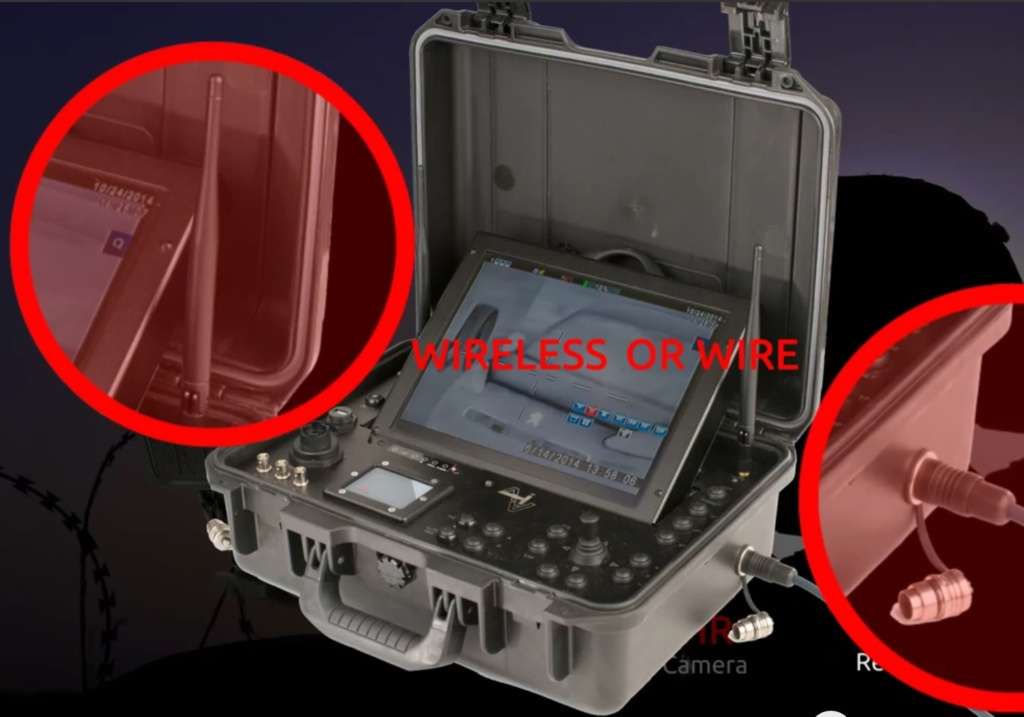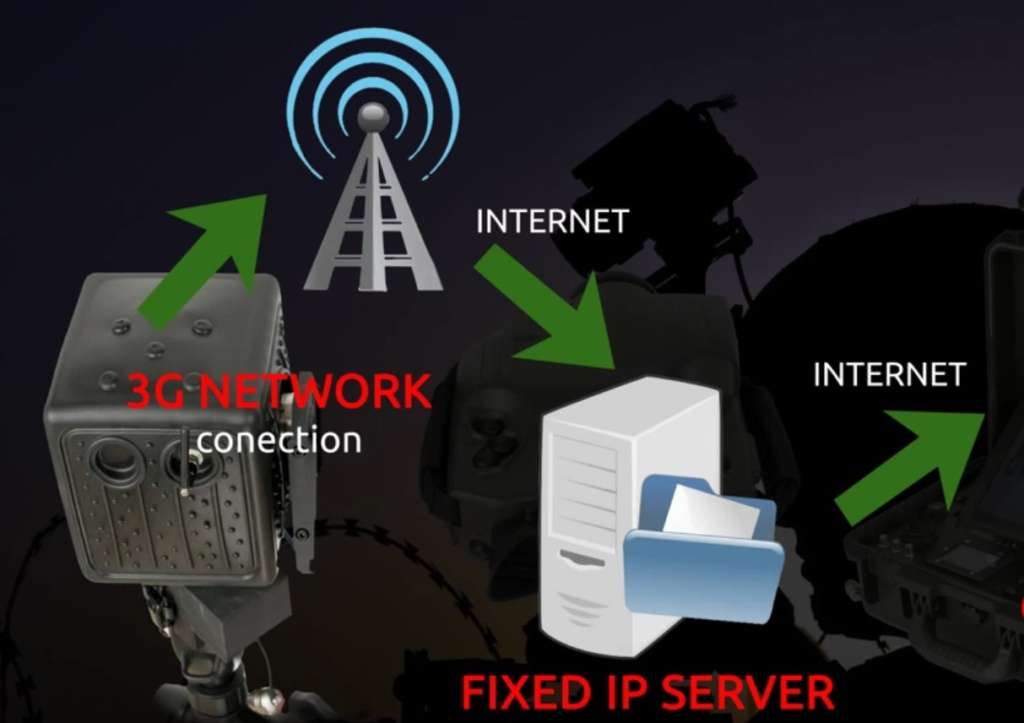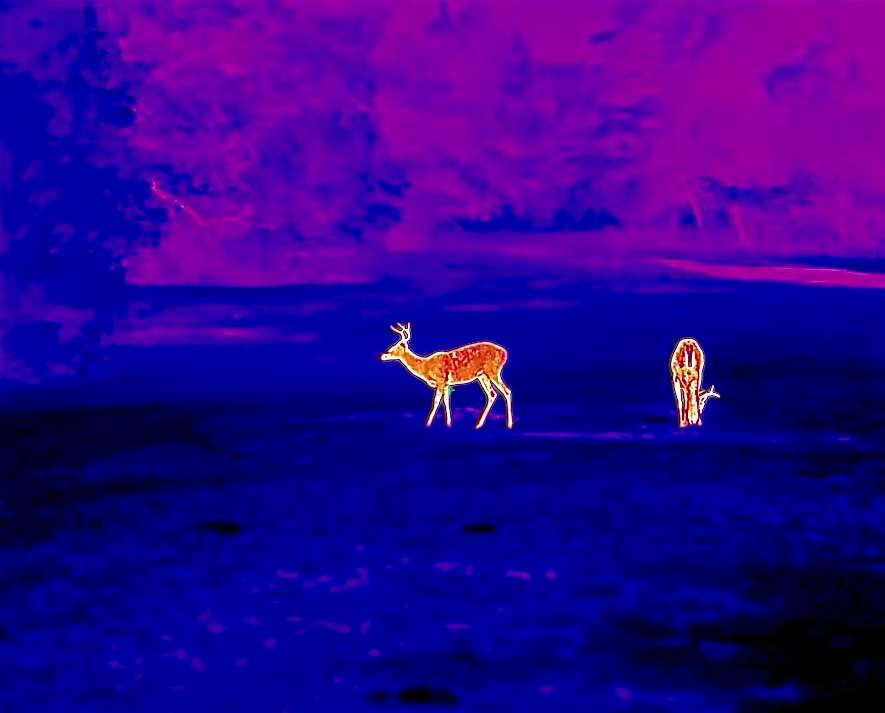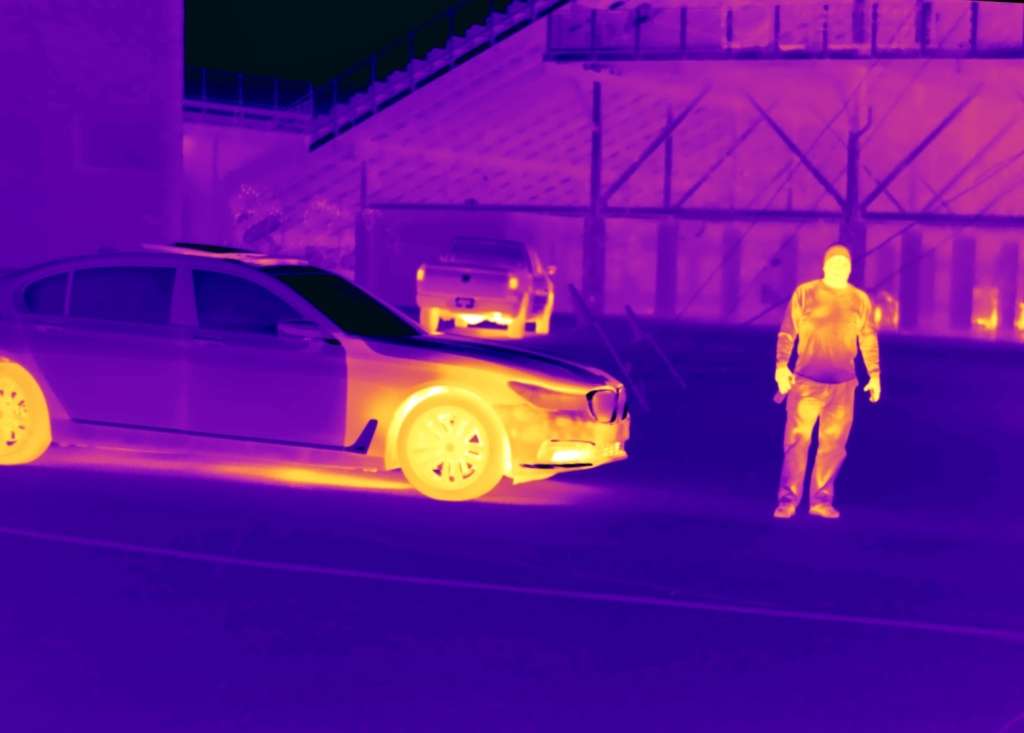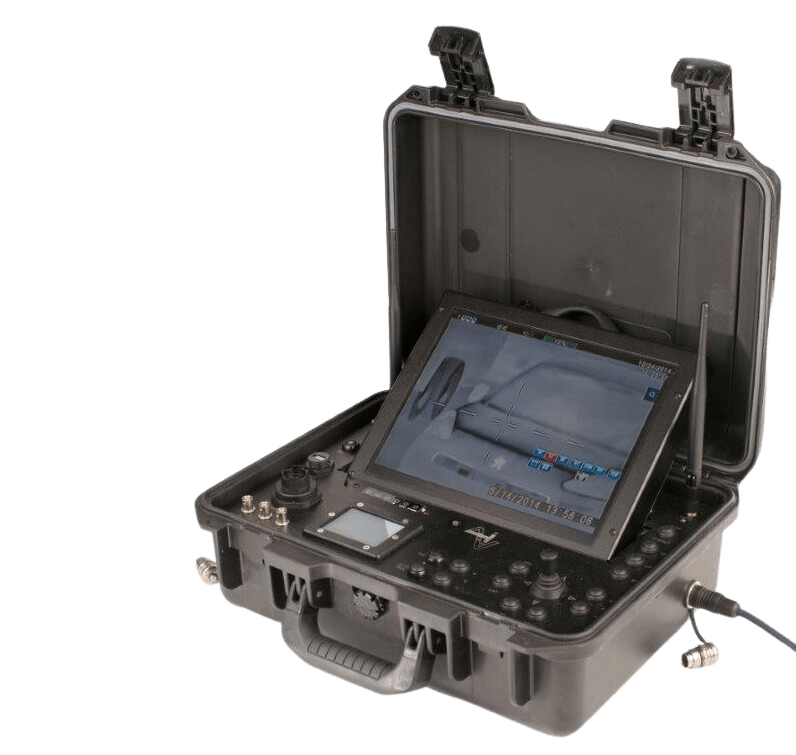10 Hour Battery Multi-Sensor Thermal Binoculars
When looking into the immersive dual eye OLED display of the arrow, you are guaranteed to enjoy high grade image quality even when viewing for long periods of time, specialty optical coatings relieve eye strain. There simply isn’t a better LWIR(Long Wavelength InfraRed) maintenance free multi sensor thermal binocular choice anywhere.
SPI ARROW T640-75-B
THERMAL MONOCULARS | PART #T640-75-B
CHARACTERISTICS
Resolution: 640 × 512 / HD EO / LRF
Lens: Effective 135 mm / custom optics available
The system integrates an ultra-sensitive thermal imaging detector with various lens options, a zoomable CCTV low-light CMOS camera, GPS, a Laser Range Finder (LRF), image stabilization features, 3G-enabled pan-tilt remote sensing capabilities, a Digital Magnetic Compass (DMC), an IR laser pointer, and image storage. All these components are housed within a rugged chassis that meets MIL-STD 810F standards, ensuring IP67 sealing. Users can experience a clear and vibrant dual-eye binocular view thanks to the system’s OLED micro displays.
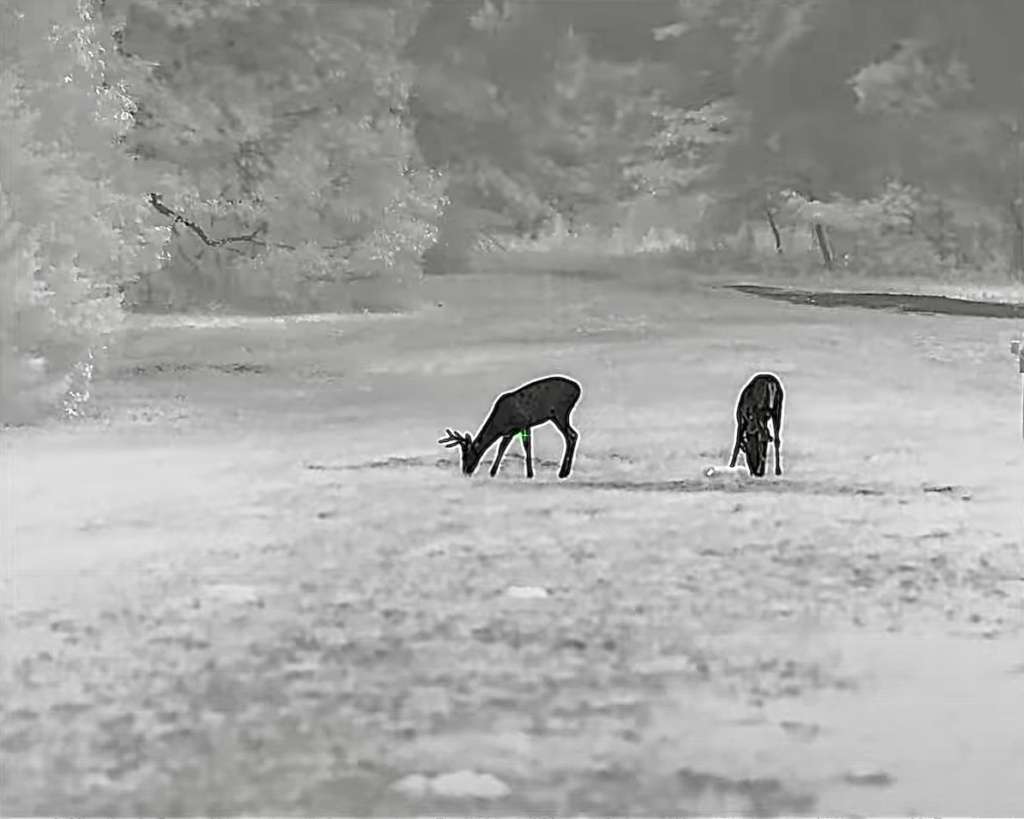
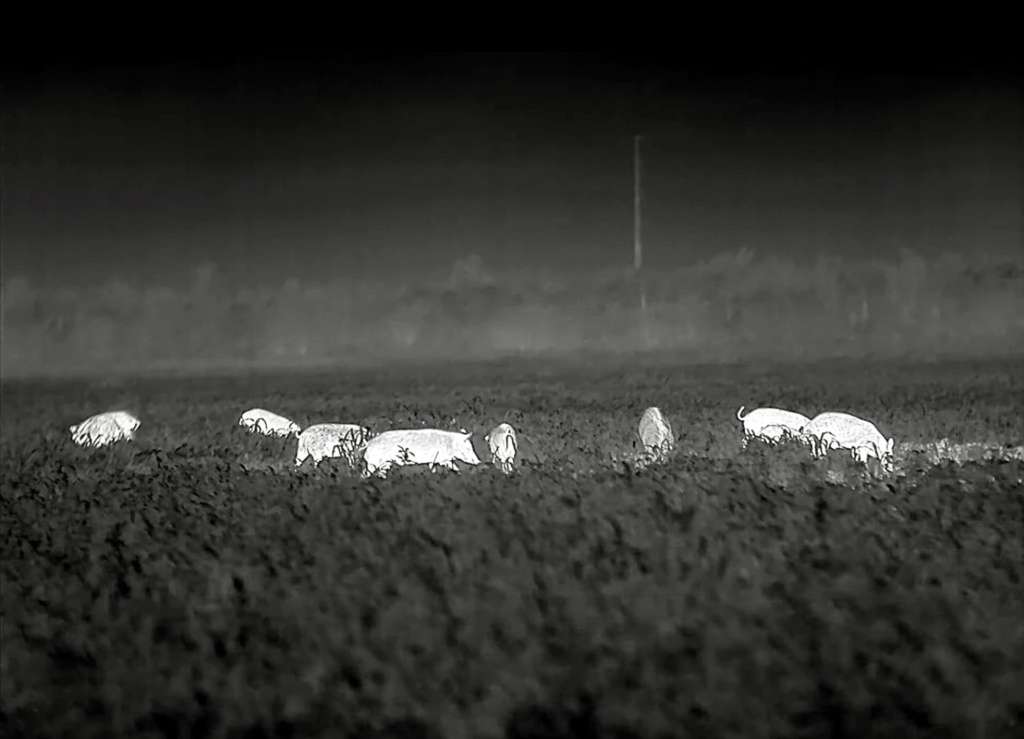
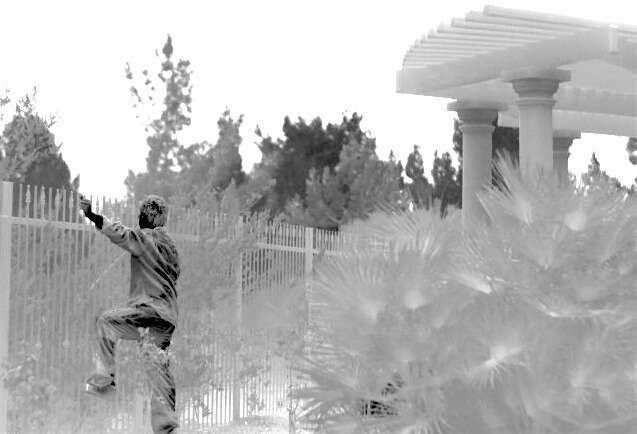
DESCRIPTION AND FEATURES
Superior image quality and sensor sensitivity for rough environment. Locate point of interest with LRF in the 2 km range and acquire its coordinates, azimuth and elevation. Locate point of interest with LRF in the 2 km range and acquire its coordinates, azimuth and elevation. Endurance of equipment provides successful mission. Available in Olive green, Desert sand or Navy gray. Quick transformation into wireless (WIFI, 4G) remote control stationary system with tripod and remote control unit.
The Arrow ISR EOIR long-range infrared thermal binoculars function as a multi-sensor FLIR geo-imaging system. They are equipped with a Laser Range Finder (LRF), GPS, compass, laser pointer, and recording capabilities. Additionally, they feature a zoomable CCTV EO low-light camera channel. Optional features include Wi-Fi/4G remote control and PTZ C2 functionalities.
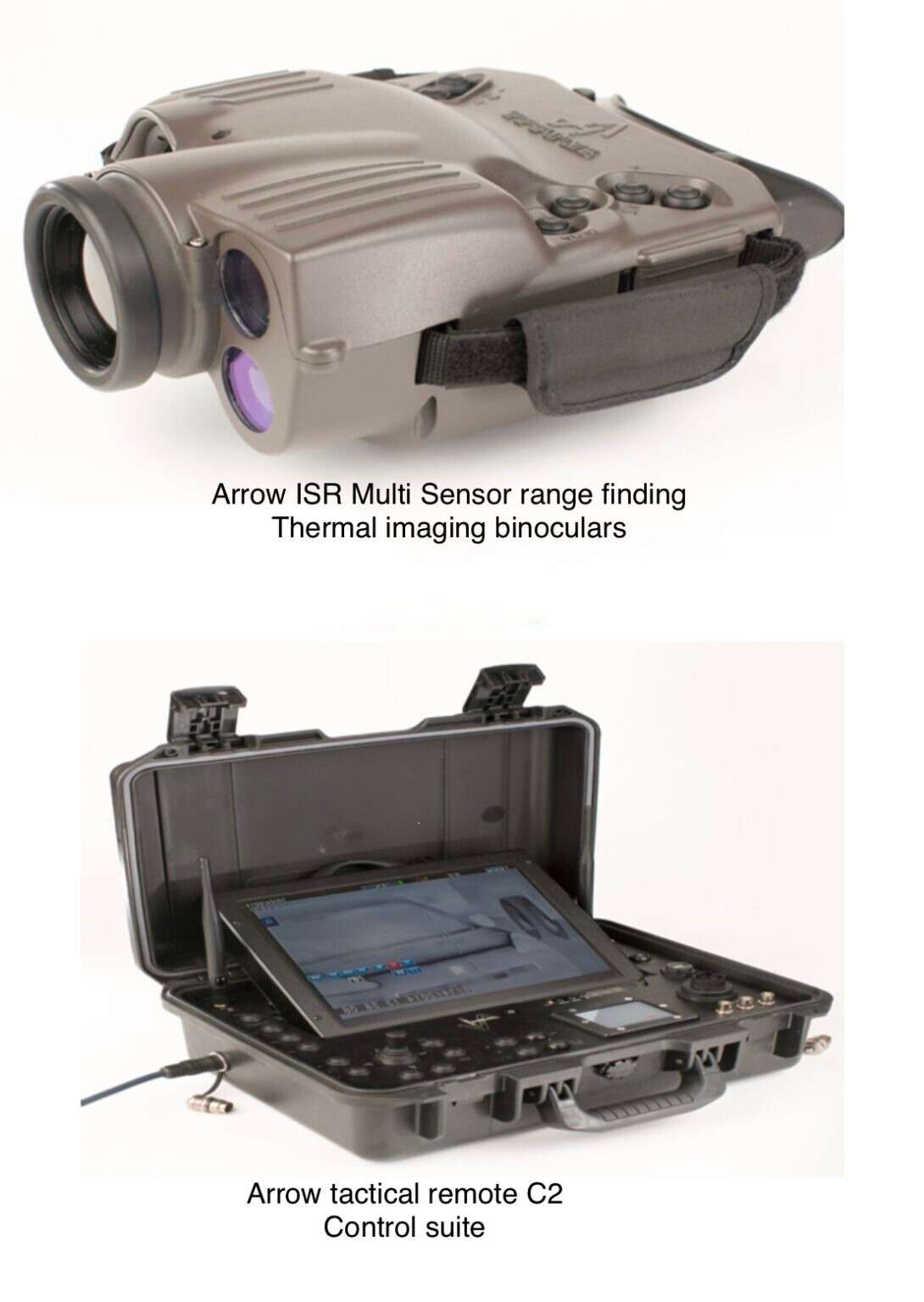
Specifications Of The Arrow Advanced Long Range Thermal Binoculars System/PTZ
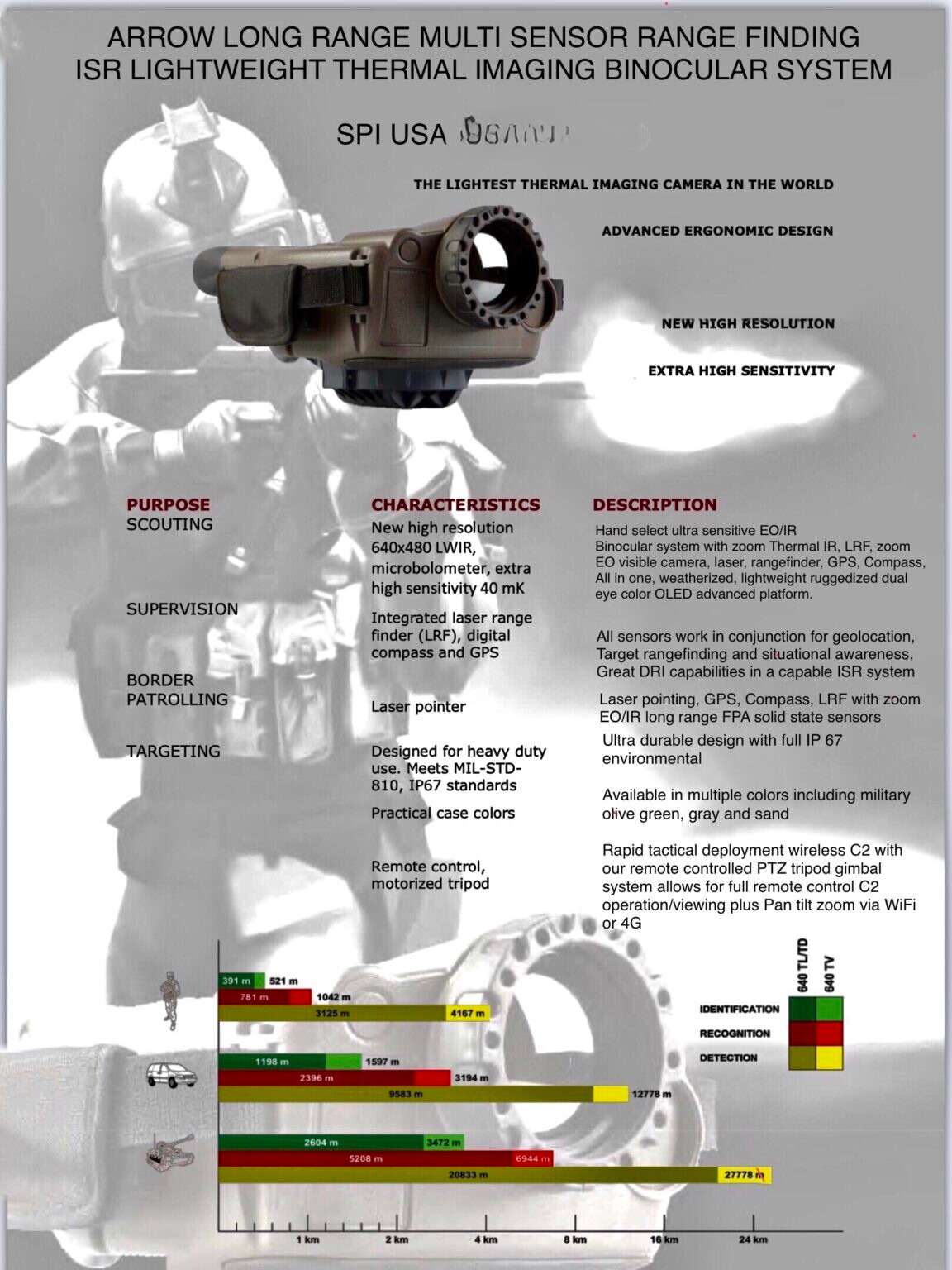
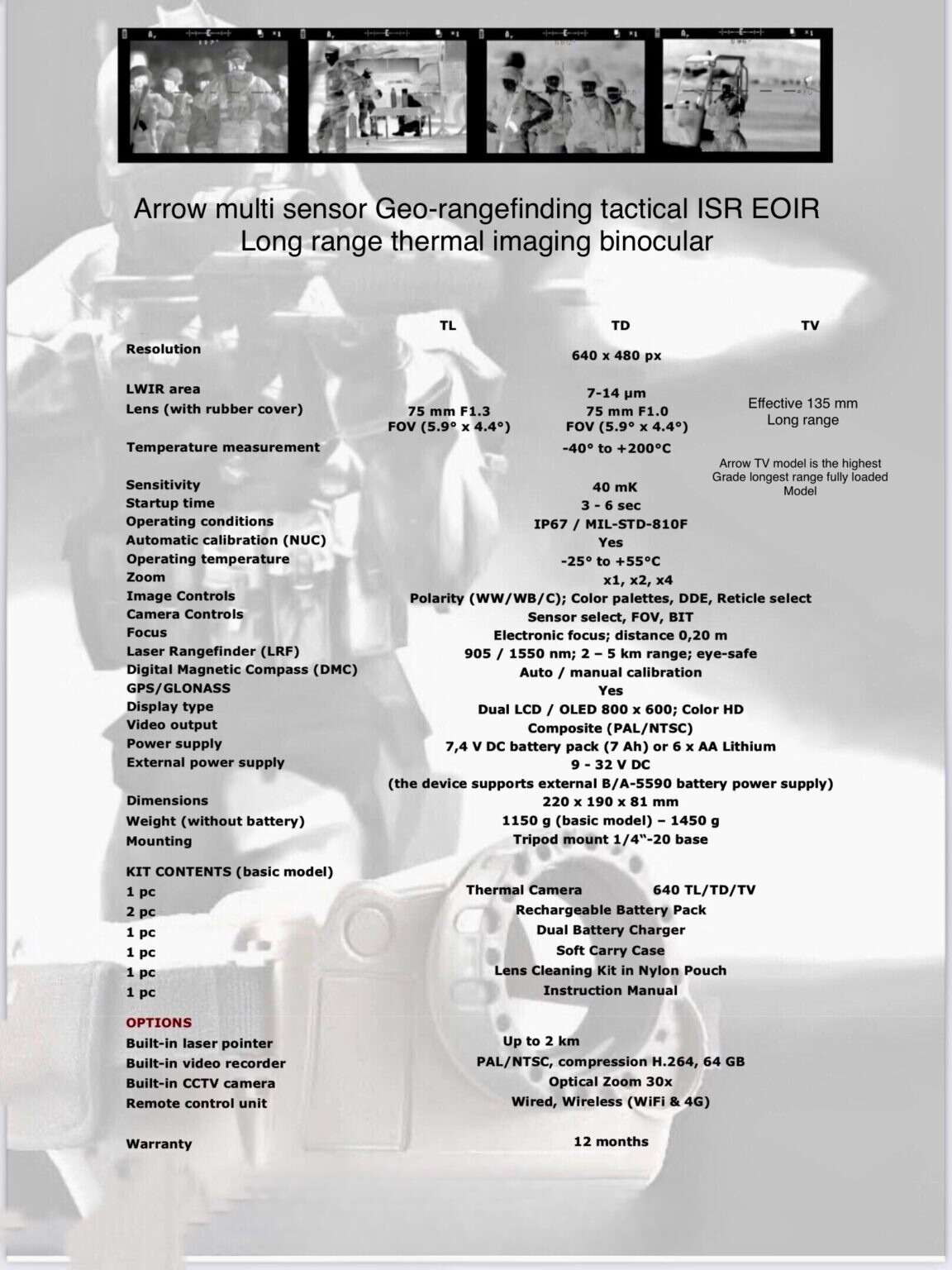
What are Long Range Thermal Imaging Binoculars?
Military thermal binoculars are specialized devices that enable users to see in complete darkness by utilizing optics with infrared radiation.
History of Thermal Imaging
- Discovery of Infrared Radiation: The existence of infrared radiation became known in 1800, thanks to the pivotal work of astronomer Sir William Herschel.
- Early Applications: Initially, infrared light was predominantly used for temperature measurement, leading to the creation of detectors and sensors for bolometers and thermometers.
- Innovations by Leopoldo Nobili: By applying the Seebeck effect in 1829, Nobili introduced the world to the first thermocouple, which was a refined thermometer and the precursor to the thermopile.
- Advancements Post WWI: After World War I, there were numerous discoveries benefiting civilians where long-range thermal imaging technology was successfully utilized.
Milestones in Military Thermal Imaging
- First Military Use: In 1929, Britain introduced the first military thermal binocular camera for air defense, an invention of Hungarian physicist Kálmán Tihanyi.
- US Developments: In 1947, Texas Instruments, in collaboration with the US military, developed the line scanner. However, its drawback was the one-hour image rendering time.
- British Defense Innovations: During the 1950s, Britain developed a linescan unit known as “Yellow Duckling”, designed to detect underwater attacks. Although it had its flaws, it paved the way for the adoption of IR technology for military scanning.
- Modern Discoveries: Pyro-electronic scanning and solid-state thermal-imaging arrays have been fundamental in the development of modern thermal vision devices.
Types of Military Long Range Thermal Binoculars
Uncooled Detectors:
- Operate at ambient temperature.
- Use sensors that measure infrared heating values.
- Generally more affordable due to simpler production processes.
- Tend to have lower image resolution
Cooled Detectors:
- More expensive due to complex production technology.
- Require a cooling mechanism.
- Offer a higher precision image, suitable for military-grade applications.
The binoculars measure infrared radiation from objects and produce an image based on the heat detected. This allows for visibility both day and night.
Applications of Thermal Imaging Binoculars
Beyond military and defense applications, thermal imaging binoculars serve various purposes:
- Building Industry: Detect heat leakage or moisture in structures.
- Anti-terrorism: Monitor unauthorized border crossings.
- Firefighting: Detect hotspots in obscured or smoke-filled environments.
- Medicine & Veterinary: Used for diagnostic purposes.
- Astronomy: Explore celestial bodies.
The Technology Behind Long Range Thermal Imaging Binoculars
These devices leverage cutting-edge technology to detect temperature differences in objects. Features include:
- Digital photography and video recording.
- Professional-grade lenses.
- Compatibility with smart devices.
Modern thermal binoculars work on the principle of black body radiation, where any object above absolute zero emits infrared radiation.
